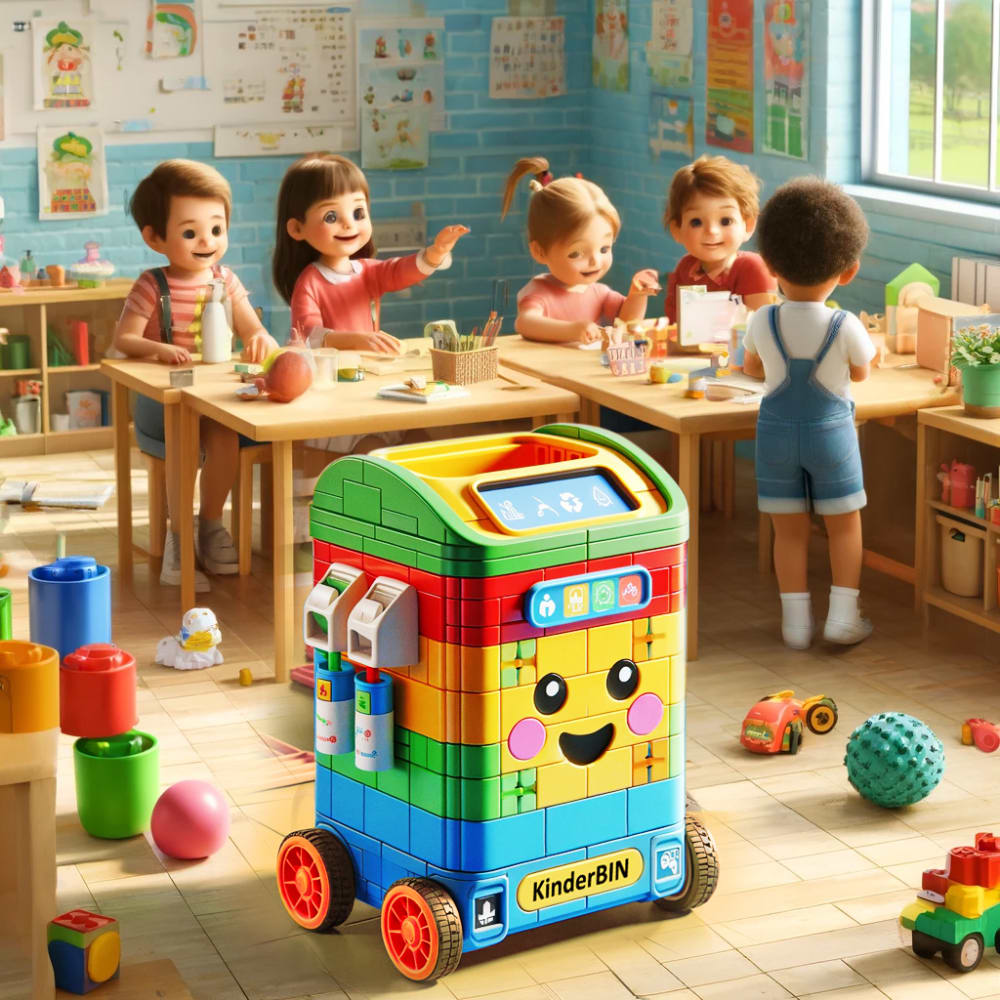Design Overview:
KinderBin is an innovative, child-friendly robotic dustbin designed to enhance environmental education in early childhood settings. Inspired by the engaging simplicity of lego blocks, this compact and mobile robot is tailored to foster responsible waste management practices among young learners in a playful and accessible manner.
Functionality and Features:
KinderBin is equipped with a multiple waste compartments, scaled appropriately for the volume and nature of waste typically produced in a kindergarten classroom. It features a built-in hand sanitizer dispenser, strategically placed to promote hygiene after disposal activities. The robotic dustbin is powered by a friendly digital interface, which displays animated expressions and shares encouraging messages about cleanliness and the importance of recycling.
This small, autonomous unit moves smoothly across classroom floors, actively inviting interaction through its approachable design and vibrant color scheme. It utilizes simple voice and touch sensors to engage children, responding to their actions with positive feedback and animated joy, thus turning the routine task of waste disposal into an enjoyable learning experience.
Educational Impact:
KinderBin is not just a receptacle for trash; it's a dynamic educational tool that introduces and reinforces concepts of environmental stewardship. By segregating waste and utilizing the hand sanitizer, children learn the fundamentals of hygiene and recycling in a hands-on way that resonates with their daily activities. The robot's interactive features are designed to captivate young minds, nurturing a sense of responsibility and awareness about their impact on the environment from an early age.
Design Aesthetics:
Reflecting the playful nature of its primary users, KinderBin mimics the look of lego blocks, appealing to children’s affinity for construction and creativity. The design is robust yet lightweight, ensuring safety and ease of use. Its low height and unobtrusive size allow it to be a seamless addition to the classroom environment, where it can be easily accessed by children without overwhelming the space.
Sustainability and Safety:
KinderBin is constructed from eco-friendly materials that are durable, non-toxic, and recyclable, aligning with its message of sustainability. It operates on a rechargeable battery system that minimizes its ecological footprint. Safety features include rounded corners, secure internal mechanisms, and automatic shut-off functions to ensure that interactions remain safe for young users.
Community and Beyond:
While initially implemented in a classroom setting, the principles taught by KinderBin have broader implications. Children take these lessons home, spreading knowledge about waste segregation and environmental consciousness within their communities. Thus, KinderBin serves as a catalyst for broader environmental change, spurred by the youngest members of society.
Conclusion:
KinderBin represents a harmonious blend of technology, education, and design, crafted specifically to engage and educate the next generation on crucial environmental practices. Through its thoughtful design and interactive features, KinderBin aims to cultivate a foundation of environmental responsibility that young children will carry forward into the future.
Like this entry?
-
About the Entrant
- Name:Aashish B Chaudhary
- Type of entry:teamTeam members:
- Anand Sharma
- Sandeep Varma
- Abhijeet Bhoge
- Jayesh Maurya
- Patent status:none





